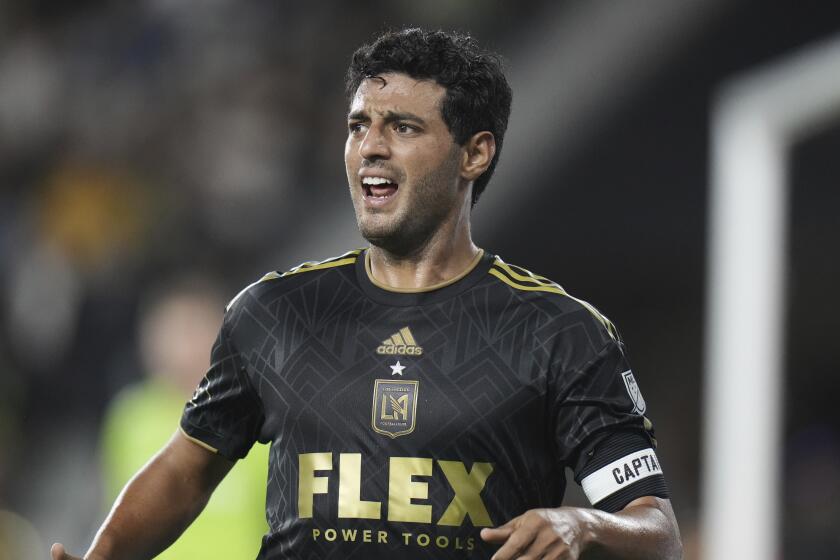Nobody Plays Trading Game
- Share via
The WNBA trade deadline has come and gone. For the contenders, it was a last chance to get ready for the playoffs.
And the winners?
None. There was no player movement, no last-second roll of the dice.
Honestly, with 10 of the league’s 16 teams below .500 before Tuesday, didn’t somebody need help?
“I was surprised nothing got done from the standpoint that a team sitting in the position close to the league’s top records--a Sacramento, a Houston, a Miami--could have used someone,” Phoenix Mercury General Manager Seth Sulka said.
“It’s not like the NBA, where it’s hard to trade because of restrictions like the salary cap and luxury tax. We don’t have those restrictions. You don’t have to be a finance major to make a deal.”
It was not as if the phones were broken.
The Cleveland Rockers might have been willing to part with forward Eva Nemcova, but she is coming off knee surgery and hasn’t played enough to garner wide interest.
The Houston Comets had talked to the Mercury about forward Jennifer Gillom, the Mercury’s leading scorer. But nothing was firmed up.
New York Liberty forward Rebecca Lobo or Washington Mystic guard Nikki McCray could have been had for a song--or even a draft pick. But there were no takers.
If the Sparks had wanted to make a deal, the conversation began with teams asking for versatile forward DeLisha Milton. The conversation usually ended seconds later.
“There was a lot of phone activity on Monday and several days prior,” Indiana Fever General Manager Kelly Krauskopf said. “But most of the teams in the talks were the ones under .500. And the teams we talked to had a core base of players they did not want to change. They weren’t ready to break up what they’re building.”
What may have also affected people’s thinking is the upcoming draft lottery.
The lottery is for the eight teams that do not qualify for the playoffs, and it determines the order for the top three picks. As with the NBA, a team’s win-loss record affects its chances of getting the top pick.
As Sulka noted, trades this time of the season are often to “tweak” a team’s roster rather than make a major overhaul. Draft picks are usually reliable bargaining chips.
“Knowing if you don’t make the playoffs you have a shot at the No. 1 pick has changed the variables,” Sulka said.
Krauskopf agreed.
“This past draft was the first one that had a solid first eight to nine picks that could play,” Krauskopf said. “Next year’s draft may only have a solid four or five. So the lottery situation kept some people at bay.”
As a league, the WNBA is evolving. But it is making faster progress in some areas than other, more established professional sports.
According to an annual report by Northeastern University’s Center for the Study of Sport in Society, the WNBA and NBA were the two major sport entities closest to “genuine equity” when it comes to opportunities for women and minorities in decision-making positions in professional, Olympic and college sports.
In the study’s 2001 Racial and Gender Report Card, the WNBA got an A and the NBA a B+, the only grades higher than C.
The report card, in its 12th year, documents and analyzes the hiring practices of women and people of color in the two basketball leagues, the NFL, major league baseball, the NHL, Major League Soccer, and the NCAA and its members.
The U.S. Olympic Committee and its governing bodies were included for the first time.
“There was a decline in the influence of women in most sports and organizations covered,” said Richard Lapchick, founder and director of the center. “This makes it even more striking that the WNBA, a women’s league headed up by a woman, had the best record for diversity in sport.
“The NBA has always had the best record regarding diversity. Its own creation is now a worthy rival.”
More to Read
Go beyond the scoreboard
Get the latest on L.A.'s teams in the daily Sports Report newsletter.
You may occasionally receive promotional content from the Los Angeles Times.










